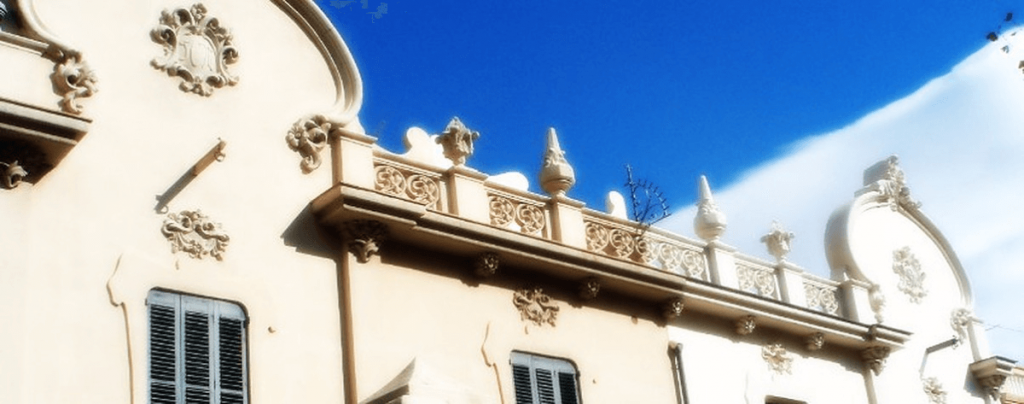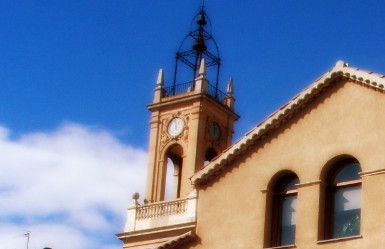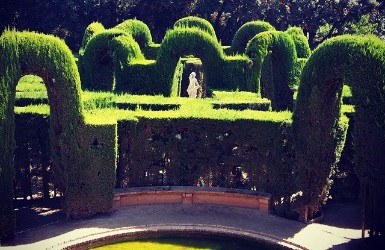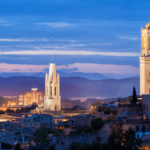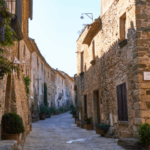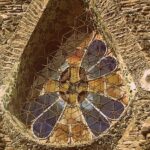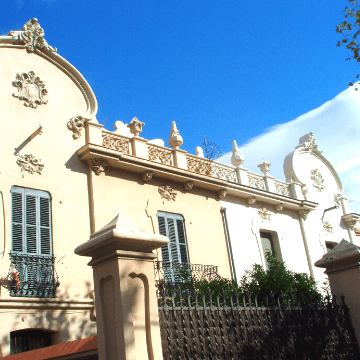
Horta-guinardó: Going Off The Beaten Path
WHAT SHOULD YOU SEE IN THE HORTA DISTRICT OF BARCELONA?
With the construction of the Eixample district after 1854, Barcelona expanded its limits beyond the city walls, eventually reaching those villages in the subburbs, that finally lost their independence and were annexed. One of the last to become part of Barcelona was Horta, in 1904. This a rural area whose name translates as orchard, has been documented already since 965. Being further away from the top tourist sites, the area hasn’t been much affected by the tourist crowds, preserving its authenticity and even its village essence in some corners.
These are our favorite sites in the neighborhood of Horta:
1
Aiguafreda Street
Before the invention of washing machines, between the 1600 and early 1900’s, the bourgeoisie of Barcelona needed someone to wash their clothes. Thanks to the abundance of underground water, wells and water springs, the women of Horta used to take care of the laundry of the wealthy, washing it in outdoor sinks to make some extra money for their household. They’ll collect in on Mondays and bring it back clean on Saturdays.
Entering this street almost feels like sneaking into someone’s home. In the Aiguafreda street have been preserved those small countryside houses, with vegetable patches and gardens, and one of them, Ca n’Eudald, still preserves 2 of their original 5 wells and 2 washing sinks, and it’s inhabited by the fifth generation of the same family. It’s a public street, don’t fear to enter it, but do it with respect for the neighbors, their properties and the landscape.
2
Plaça Eivissa
The Blue line will take you here: exiting the Horta station you’ll arrive to this lively square, center and soul of the life of the district. Here you’ll find the famous Bar Quimet, with a very popular outdoor terrace, serving tapas and sandwiches, and a cute modernist bar Frankfut Julia serving hotdogs and tapas in a setting with charm.
Nearby you can visit the local marketplace, busy in the mornings when housewives come here to get fresh produce, meats and fish – a much more local alternative to the cosmopolitan Boqueria in La Rambla. Or just seat down on a bench a watch people go about on their errands.
3
Can Fargues
2-8, Frederic Rahola Ave. Also known as Can Fargas, this private property incorporates both a defense tower from the 11th century and a farmhouse from the 1300’s and 1400’s built around it and totally refurbished in the 1700’s by the Pujol family, wealthy grocers and landowners. Their heirs would marry the Fargues family in the late 1800, and that’s when the property changed name.
In 1997 it was bought by a company, with the condition that the last heir of the family would continue to live there. The company, Unicompta, was planning to turn the building into a hostelry school, a restaurant, an old people’s home and a large parking lot – which could have potentially damaged the preservation of the original structure.
Luckily, after years of social pressure and petition drives, the neighbors convinced the City Council to buy it out. After a respectful restoration, the farmhouse became the district Music School in 2016. Once more, the Barcelonans had managed to save part of their historical heritage.
4
Campanar de les Noies
On the number 65 of the Horta street you’ll find a civilian building with a bank in its street level. The building is topped by a bell tower known as the Tower of the Girls, even if it’s not the original bell tower of the story.
It is said that in the 1800’s Horta extended well beyond its current limits, and despite being a poor area they aspired to have bells that could be heard from the different areas of their territory. This is how it was decided to use the last funds that should have been destined as a dowry for the poorest girls of the area to cast two bells that were placed on top of a bell tower built behind the local slaughterhouse. The girls left with no dowry had very little chances to get married, and that’s why the locals decided to honor their sacrifice calling the bell-tower as Tower of the Girls.
Unfortunately in the 1940’s the tower was in such a bad state of conservation that it was knocked down, but the locals missed the sound of the bells so much that when the real state of the former slaughterhouse was bought by a bank, the project of the new building included a new bell-tower, that the locals have continued to call the Tower of the Girls.
5
Rambla Cortada (Campoamor street)
Another masia farmhouse, now a Catalan food restaurant – Can Cortada, gave the original name to one of the main streets of Horta: Rambla Cortada. However, in 1907 the name of the street was changed to Campoamor, and it’s not sure if it’s named after the poet Ramon de Campoamor (who has nothing to do with the district of Horta) or it’s a deformation of a Roman vila documented in the area and called Campo Amaro. In any case, here you’ll find the elegant and residential Horta, with modernist houses that might want to rival with those mansions in Avinguda Tibidabo but now with a more decadent feel.
It is said that the yellow fevers of the 1870’s made the high society of Barcelona find shelter in the villages at the foot of the Collserola range, and that’s how the first bourgeoisie mansions were built here, first as summer homes, later on permanently inhabited. In one end of the street you’ll see the local church, Sant Joan d’Horta, and at the top a boundary stone, one of the only 4 that are left in Barcelona from the middle ages – although not completely original, when they marked the limits of parishes and villages.
And BONUS! Here is a cypress tree maze in the Horta District:
6
Parque del Laberinto de Horta
You’ll have to cross the city road ring (Ronda de Dalt) that now splits the district in two, to reach this little known gem. The safest way to go is to walk to the Mundet subway station and get out from the exit in the other side. The origin of this site is a medieval defence tower, the Torre Sobirana, next to which in the 1700’s was built a private residence for the Lord of Desvalls, an illustrated gentleman that decided to create a neoclassic garden in the hill. The theme of the garden would the the dangers of love, and its main feature would be a cypress tree maze.
Its uniqueness attracted the high society, including the King Charles IV who suggested Desvalls to offer it to him as a king… to no success. In 1967 it was purchased by the city council, who opened it to the public three years later after a detailed restoration.
The labyrinth is fun to enter and feel like Harry Potter in the Triwizard Tournament for a short time, before finding your way out. I totally recommend to get lost in the rest of the park after exiting the maze: there are lots of romantic corners that will make you forget the city buzz for a while. Oh! And we include it in our Parks & Gardens Tours!
What site of Horta-Guinardó would you like to visit?
Marta
MORE BARCELONA TIPS FOR YOU:
SHARE WITH YOUR TRAVEL MATES
RESEARCHING FOR A TRIP IS TIME-CONSUMING…
Need more inspiration?
Our 100% FREE Barcelona Collection will give you everything you need to organize the trip of your lifetime to Barcelona.
BEST INSIDER TIPS FROM THE PROS!


